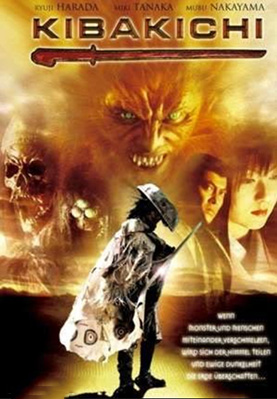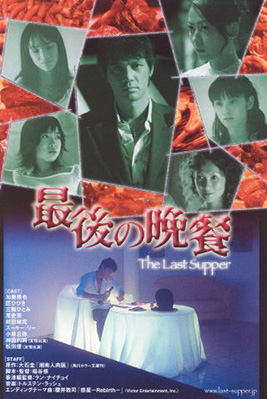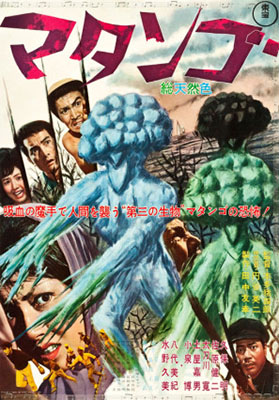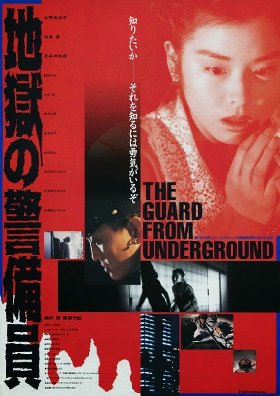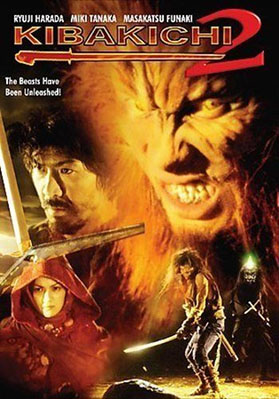
Kibakichi 2 (2004)
Sakuramaru (Masakatsu Funaki), a renegade samurai, is cutting his way through the countryside and anyone who stands in his way. He is more than happy to cross paths with Kibakichi (Ryuuji Harada) because he has finally found a worthy opponent. Anju (Miki Tanka), another werewolf samurai, interrupts their battle by trying to kill Kibakichi herself in order to get revenge for her monster family. Kibakichi is injured and is cared for by a young blind woman named Tokoko (Aimi Nakajima) in a nearby village. A new threat emerges when three monsters decide to take over and all concerned parties are dragged into yet another Yokai war.
Kibakichi 2 opens promisingly enough with Sakuramaru cutting down an entire city with his sword but before long, the film slows to a crawl. There is plenty of swordplay and some monster action (needs more please) but the spark is definitely gone this time around. A melodramatic departure is always welcome (that’s just me) but not one as flat as the one here. The pacing of this film is terrible making the 80 minute running time feel like several hours. There are too many cheap shortcuts in the effects department that really stand out. There are fewer monsters in Kibakichi 2 than in the first film so the rubbery masks stick out even worse. Samurais attack with mouths full of fake blood, are cut down, and then spray their bloody spittle into the air.
The returning cast (Ryuuji Harada and Miki Tanaka) seems bored with the material but some of the new faces are up for the task. Masakatsu Funaki (Godzilla: Final Wars) is great as the Sakuramaru, the bloodthirsty berserker swordsman. Aimi Nakajima is also good as the sweet (and very cute) Tokoko who gets caught up in all the intrigue. As for Ryuuji Harada (Izo, Pyrokinesis), he takes the already stoic character of Kibakichi and makes him into a sleepwalker through much of the film. Miki Tanaka plays Anju as though she was constipated and just can’t seem to get into the battle scenes.
Kibakichi 2 is a big disappointment after the unbridled insanity of the first film. Not to say that Kibakichi 2 is your average flick. Oh no. Anyone who watches the samurai werewolf ballet sequence at the film’s climax won’t believe for a second that there is anyone even remotely normal behind the camera. Speaking of the samurai werewolf ballet, this is one of the weirdest and most endearingly pathetic filmic disasters I’ve ever seen. While witnessing this spectacle I felt was teetering on edge of madness. In fact, this scene is probably the only reason to sit through this movie. I just don’t know anymore.
I hate to compare a sequel to its predecessor this blatantly but while looking for, at best, a good companion piece or, at worst, an entertaining diversion, I found neither. Kibakichi 2 is brought down by its molasses pacing, sleepy cast, and restraint of the craziness that made the first film so much fun. Who knows what happened between the two films but my only hope now is that there won’t be a third.
